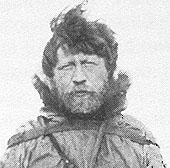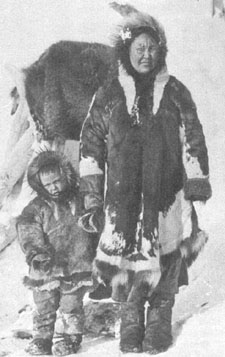|
Valhjalmur
Stefansson
EVERYONE
IS SPECIAL
|
|
UNITARIAN UNIVERSALIST ALPHABET
Please read
the Overview before using this Plan.
S s Letter S introduces Vilhjalmur
Stefansson, and exploration of the Arctic region, and treatment of
Inuits.
MATERIALS:
Construction paper Letter with hole punched in top, yarn for
necklace
Snacks— Sandwiches,
sugar cookies, shakes
GETTING
STARTED:
Welcome.
After each person says his or her name, the group responds, “Welcome,
(name).” For a child who is attending for the first time this
year, add name to the letters that have been posted and to the
attendance sheet, and make a nametag during or after the session.
Leave an empty chair for someone who is not present or for someone
who has not joined the group yet.
The Letter
of the Day:
Talk
about the Letter.
Give
the Letter Necklace to a person with that initial.
Talk
about the things that the children have brought for the Letter,
and/or Letter Bag.
Put
the things related to the letter in the Special Place
SPECIAL PERSON: Vilhjalmur
Stefansson (1879-1962)
Vilhjalmur
Stefansson was born in a log cabin in what is nowManitoba,
Canada. His parents had come to Canada from Iceland. When he was 2
years old, there was as flood that destroyed everything for miles
around, and people were starving because there was no food. So his
family moved by riverboat and oxcart to North Dakota, in the United
States, where they built another cabin.
Villi,
as his mother called him, believed that it was important to keep up
with new knowledge, including changing his ideas as he learned more.
This was a reason that he was a Unitarian. In May 1900, he was asked
by an Icelandic Unitarian minister to attend an International
Conference of Liberal Religions in Boston. He was to ask the
American Unitarian Association (this was long before the Unitarian
Universalist Association formed) to continue to contribute money for
the Unitarian Church in Winnipeg, Manitoba. He was successful, and
met a number of Unitarians who interested him in becoming a minister.
But he became an anthropologist, to study the origin and culture of
people.
Villi
explored the Arctic region of Canada and Alaska, and lived with the
Eskimos, who prefer to be called Inuits. He wanted their culture to
be protected, and wanted people to know how they adapted to the cold
climate, how they shared in their culture. He had a great respect for
the people he met on his explorations. He learned skills of surviving
in the cold. He even learned how to build an igloo -- in two hours,
with help from two friends!
AFFIRMATION: Everyone
is special.
Sacred, special.
The way we treat how other people live is special and sacred. We use
the term "sacred" to think of something that is set aside,
such as in our worship services. When we think of everyone as being
special, we need to think of the culture of people as special,
treated with respect so that it is sacred. The Inuits lived so
closely with the nature around them, including the ice, the land, and
the animals. Villi respected this closeness and did not want other
cultures, like with cars and televisions, to spoil it.
Have children think of
times when they have been in a setting with natural elements,
possibly in the woods or an area in which there are trees and
animals. Have them think about what was special about that place --
sounds of birds, animals, water, etc. Children can also do short
guided meditations through nature. They can have special places in
their minds that they can think about, especially if they are feeling
sad or upset.
THE LETTER S
IN THE CHURCH
Songs: Take time to
sing some of the favorite songs of the children and the congregation.
A-B-C
Animals: Seals --
discuss the importance to the Inuit, especially for food and
clothing.
Body: Stomach
Calendar: Saturday,
Sunday, and September
Note the date of the
session and any special events for the day, including birthdays.
Note items beginning
with that letter
Note events between
today and the next session.
CLOSING: Gather around
the Special Place where the things related to the letter have been
placed. "We give thanks for the Letter S. We have shared and
learned about special people and animals and ourselves and our
church. May we leave in love and peace. Next week we will meet
again. Our letter will be ____ and our leader(s) will be
____________________." Make sure that people take home things
that need to go.
VARIATIONS FOR OLDER
CHILDREN
Read some
Inuit Stories, especially those related to creation.
©
Helen Zidowecki, 10/2007







